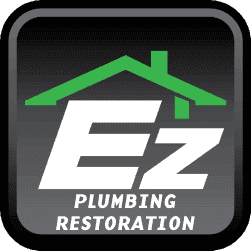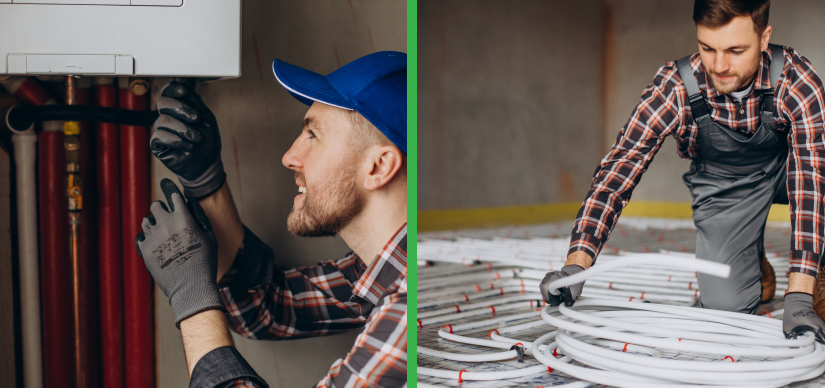Winterizing Your Pipes: The Importance of Pipe Insulation for a Cozy and Leak-Free Home
As winter approaches, it’s crucial to take proactive steps to protect your home’s plumbing system from the harsh effects of cold temperatures. Frozen pipes can lead to costly damage, including burst pipes and water damage. Winterizing your pipes is a preventive measure that can save you from the inconvenience and expense of plumbing repairs. This article is a complete guide to exploring the essential steps to pipe insulation for winter..
Here are the reasons for insulating the pipes in winter-
Prevention of Freezing:
The primary and most immediate reason for winter pipe protection is the prevention of freezing. When water within pipes freezes, it expands, exerting immense pressure on the pipe walls. This pressure can lead to cracks, bursts, and subsequent water damage. Insulation acts as a thermal barrier, retaining heat and ensuring that the temperature inside the pipes remains above freezing, even in the coldest conditions.
Energy Efficiency:
Insulating Pipes for Cold temperature protection provides a significant energy efficiency advantage by reducing heat loss and maintaining hot water temperatures. Insulated pipes require less energy to keep water warm, leading to lower energy consumption and reduced utility bills. This thermal barrier ensures that the heat generated to warm the water is retained, allowing for the plumbing system’s more efficient and sustainable operation.
Reduced Heat Loss:
Insulating pipes minimize heat loss during the transportation of hot water. Heat escapes from the pipes without insulation, especially in unheated or exposed areas. The insulated layer creates a buffer that keeps the heat within the lines and ensures the water remains at the desired temperature.
Condensation Control:
Pipe insulation not only prevents freezing but also offers condensation control advantages. When warm pipes come into contact with cold air, condensation forms, leading to corrosion and mold growth. Insulation is a barrier preventing direct contact between warm air and cold pipes. This condensation control helps maintain the pipes’ integrity, reducing the risk of corrosion and ensuring a healthier and more durable plumbing system.
Protection Against Pipe Corrosion:
Preventing corrosion to maintain the integrity of the plumbing system is one of the key benefits of pipe insulation. Corrosion inhibitors, coatings, or materials like PVC can be applied to the exterior of insulated pipes. These protective measures create a barrier, shielding pipes from the corrosive effects of environmental factors. Regular inspections and maintenance are also essential to promptly identify and address any signs of corrosion, ensuring the insulated pipes’ prolonged life and optimal performance.
Preservation of Water Quality:
Insulation preserves water quality by preventing corrosion and contamination. By creating a protective layer around pipes, insulation shields against the corrosive effects of cold temperatures, ensuring water remains pure and safe. This measure maintains the integrity of the water supply, contributing to overall health and safety in the plumbing system.
Prevention of Structural Damage:
Burst pipes resulting from freezing can cause significant structural damage to homes. Water damage can compromise walls, ceilings, and flooring, leading to expensive repairs and potential health hazards such as mold growth. Insulating pipe is a proactive measure to prevent these structural issues and the associated financial and health-related consequences.
Cost Savings:
Pipe insulation leads to significant cost savings by reducing energy consumption. Insulated pipes retain heat, minimizing the need for constant reheating of water. This efficiency translates into lower energy bills, making pipe insulation a cost-effective investment that pays off over time.
Compliance with Building Codes:
Many building codes mandate the insulation of certain pipes to meet energy efficiency standards. Compliance with these codes is essential to ensure the safety and efficiency of your home besides avoiding potential legal and regulatory issues. Non-compliance may result in penalties or complications during property transactions.
Environmental Impact:
Choosing Pipe Insulation leads to environmental sustainability by enhancing energy efficiency. Reduced heat loss means lower energy consumption for heating water, leading to a smaller carbon footprint. This environmentally conscious practice aligns with global efforts to minimize energy usage and mitigate the impact of climate change.
Preservation of Home Comfort:
Pipe insulation preserves home comfort by maintaining consistent hot water temperatures. As pipes are insulated, heat loss is minimized, ensuring that hot water reaches is available at the desired temperature. It enhances the overall comfort of living spaces and also contributes to a more energy-efficient and reliable plumbing system, especially during the colder months.
Protection of Appliances:
After insulating pipes, the protection of appliances is enhanced. Well-insulated pipes ensure hot water reaches appliances efficiently, reducing strain on water heaters and boilers. The insulation prevents heat loss during transport, maintaining optimal operating conditions for appliances. This protection is particularly crucial for appliances located in unheated or poorly insulated areas, contributing to their longevity and efficient performance.
Prevention of Disruptions:
Frozen pipes can result in unexpected disruptions to your daily life. A burst pipe can lead to a water shut off, forcing you to address the issue quickly. For preventing frozen pipes from bursting, proactive insulation is crucial. It provides peace of mind and maintains the uninterrupted functionality of your plumbing system.
Ease of Installation:
Installing pipe insulation is a relatively straightforward and cost-effective process. Various insulation materials, including foam sleeves, wraps, and fiberglass, are readily available. Homeowners can often undertake DIY winter pipe protection, making it accessible and manageable.
Long-Term Investment:
Viewing pipe insulation as a long-term investment is crucial. The numerous benefits it provides over the years outweigh the upfront costs. It invests in your home’s plumbing system’s durability, efficiency, and resilience.
Best Ways to Winterize Your Pipes
Winterizing your pipes is a crucial step to protect your plumbing system from the potential damage caused by freezing temperatures. Discussed are effective ways on how to insulate pipes-
Insulate Exposed Pipes:
Prevent cold air from entering your home by sealing gaps and cracks in doors, windows, and walls. Use caulk or weatherstripping to seal openings, ensuring that the cold air remains outside and the indoor temperature is maintained.
Seal Gaps and Cracks:
Identify pipes in unheated or exposed areas, such as basements, attics, and crawl spaces. Insulate them using pipe insulation sleeves or pipe wrap for winter seasons. Pay special attention to pipes near exterior walls, as these are more susceptible to cold temperatures.
Disconnect and Drain Outdoor Hoses:
Before winter sets in, disconnect and drain outdoor hoses. It prevents water from freezing inside the hose and potentially damaging the connected pipes. Consider using outdoor faucet covers for additional protection.
Shut Off Exterior Water Sources:
Locate and shut off the water supply to exterior faucets. Use the shut-off valves inside your home to stop water flow to outdoor sources. Open the exterior faucets to allow any remaining water to drain out, reducing the risk of frozen pipes.
Maintain Interior Temperatures:
On extremely cold nights, allow faucets to drip slowly. The movement of water can prevent pipes from freezing. Focus on faucets located along exterior walls or in unheated areas.
Allow Faucets to Drip:
Identify pipes in unheated or exposed areas, such as basements, attics, and crawl spaces. Insulate them using pipe insulation sleeves or pipe wrap for winter seasons. Pay special attention to pipes near exterior walls, as these are more susceptible to cold temperatures.
Install Pipe Heating Cables:
For pipes at higher risk of freezing, one of the best frost-free pipe solutions is installing pipe heating cables. These cables generate heat to keep pipes warm, which acts as an additional layer of protection. Follow the manufacturer’s instructions for proper installation and use.
Schedule a Professional Inspection:
Before winter arrives, schedule a professional plumbing inspection. A licensed plumber can identify potential issues, perform necessary repairs, and offer expert advice on winterizing your specific plumbing system.
Be Prepared for Emergencies:
Despite precautions, emergencies can still occur. Know the location of the main water shut-off valve in your home. When a pipe burst or a major leak occurs, shut off the water quickly to minimize damage.
Conclusion
Pipe insulation is a responsible measure that not only prevents the inconvenience of frozen pipes but also promotes energy efficiency, protects against damage, and contributes to the overall reliability and sustainability of a home’s plumbing system.
By following these winterization steps, you can safeguard your pipes from freezing temperatures and potential damage, ensuring continued functionality and efficiency of your plumbing system during the winter months.


